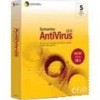Symantec 10551441 Administration Guide - Page 132
Scanning for in-memory threats, Excluding files from scanning, Enable Lotus Notes Microsoft Exchange
 |
UPC - 037648270472
View all Symantec 10551441 manuals
Add to My Manuals
Save this manual to your list of manuals |
Page 132 highlights
132 Scanning for viruses and other threats Configuring scan options To notify others of an infected email message 1 In the Symantec System Center console, right-click a server group, Symantec AntiVirus server, or client group, and then click All Tasks > Symantec AntiVirus > Client Auto-Protect Options. 2 In the Client Auto-Protect Options dialog box, on either the Lotus Notes or Microsoft Exchange tab, click Enable Lotus Notes (Microsoft Exchange) Auto-Protect. 3 Click Send e-mail to selected. 4 Click Addresses. 5 In the Email Address dialog box, provide one or more email addresses to which notification will be sent. 6 Click OK. 7 Click Message. 8 Do one of the following: ■ Click OK to accept the default message. ■ Click Compose and customize the message, and then click OK. 9 Click OK until the Client Auto-Protect Options dialog box disappears. Scanning for in-memory threats You can configure manual and scheduled scans to scan running processes to identify and handle threats that are loaded into memory. Symantec AntiVirus can terminate the process and handle the threat-infected file based on your specified primary and secondary actions. If the infected file is associated with an important process, you may need to shut down the computer, and then restart it. In-memory scanning does not scan specifically for memory-resident threats, such as the SQL Slammer worm. It scans for all threats that may be in memory. Excluding files from scanning Exclusions help you balance the amount of protection your network requires with the amount of time and resources that are required to provide that protection. For example, when you scan all file types, you may want to exclude certain folders that contain only data files that are not subject to viruses. This decreases the overhead that is associated with needlessly scanning files.















